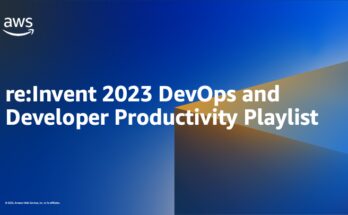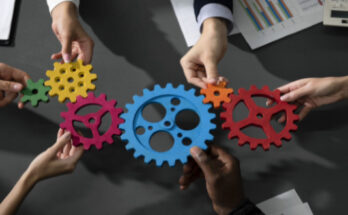vFunction Adds Real-Time Observability and GenAI Tool to Migration Platform
vFunction, the AI-driven architectural observability platform today added real-time observability and GenAI assistant.
vFunction today added an ability to observe IT architectures in real-time to a platform that automatically converts monolithic application code into a set of microservices.
In addition, vFunction has added a generative artificial intelligence (AI) assistant that identifies issues and surfaces recommendations as changes are based to application environments. Based on the ChatGPT-4 service created by OpenAI, the vFunction Assistant is designed to make it simpler to remediate and refactor applications.
vFunction CEO Moti Rafalin said these capabilities all leverage OpenTelemetry, open-source agent software being advanced under the auspices of the Cloud Native Computing Foundation (CNCF) to collect telemetry data.
It’s not clear how many applications are instrumented using OpenTelemetry, however, a survey of 1,000 software engineering professionals conducted by vFunction suggests that as organizations look to streamline the management of application environments there is a clear need for increased visibility. A full 80% said these capabilities are either extremely or very valuable, with nearly four in 10 (39%) acknowledging they lack visibility into their IT architecture. A total of 40% said they advocate for a “shift left” approach to proactively address resiliency concerns earlier in the development lifecycle.
A similar percentage (41%) also plans to leverage generative AI to improve application performance and scalability, the survey finds.
The survey also finds more than half (51%) of respondents work for organizations that dedicate more than a quarter of their annual IT and engineering budgets to remediating applications, including refactoring and re-architecting efforts. More than three-quarters (77%) have implemented enterprise-wide initiatives to address technical debt.
Among those respondents, 57% work for organizations allocating more than a quarter of their IT budget to technical debt remediation involving monolithic applications, compared to 49% for microservices architectures. More than half 53% also noted their organization delayed major technology migrations or platform upgrades due to productivity concerns involving microservices. The survey also finds that 44% noted monolithic application complexity that results in a lack of clear domain boundaries and decreasing modularity is a major challenge.
Most application environments will be made up of monolithic and microservices-based applications for the foreseeable future. The challenge that organizations encounter is that as changes are made to application environments the level of drift away from the original architecture starts to increase.
At the same time, organizations accumulate technical debt as issues that should be remediated are left to be addressed at some future date. Unfortunately, many of those issues are never resolved, simply because new application development projects require DevOps teams to divert limited resources. However, as more applications are instrumented it becomes feasible to apply AI to reduce both drift and technical debt.
Each organization must determine to what degree they wish to modernize existing applications versus replacing or retiring them altogether. However, there are plenty of instances where legacy applications are still far too critical to be replaced. The challenge then becomes to what degree to update these applications, in a way that makes them more resilient and flexible as business requirements continue to evolve.
Filed Under: AI, Application Performance Management/Monitoring, Blogs, Business of DevOps, DevOps and Open Technologies, DevOps Practice, Doin’ DevOps, Features, News, Social – Facebook, Social – X Tagged With: ai, GenAI, observability, OpenTelemetry, vFunction
Secure Coding Practices
Step 1 of 7
14%
Does your organization currently implement secure guardrails in the software development process?(Required)
Yes, extensively across all projects
Yes, but only in specific projects or teams
In the process of implementation
No, but planning to in the near future
No, and no plans to implement
What are the biggest challenges you face in implementing secure guardrails within your development processes? (Select all that apply)(Required)
Lack of awareness or understanding
Technical difficulties in integration
Resistance from development teams
Lack of suitable tools
Cost constraints
Other
Other, tell us more:
How effective do you find secure guardrails in preventing security vulnerabilities in your projects? Rate on a scale from 1 (Not effective) to 5 (Highly effective)(Required)
1
2
3
4
5
To what extent are your secure guardrails automated?(Required)
Fully automated
Mostly automated with some manual processes
Equally automated and manual
Mostly manual with some automation
Entirely manual
What features do you prioritize in a secure guardrail solution? (Rank in order of importance)Ease of integration into existing workflowsComprehensive coverage of security vulnerabilitiesCustomizability for specific project needsMinimal impact on development speedActionable insights and recommendationsSupport for a wide range of programming languages and frameworks
What are your organization’s plans regarding the adoption or enhancement of secure guardrails within the next 12 months?(Required)
Expand the use of secure guardrails to more projects
Enhance the capabilities of existing secure guardrails
Maintain current level of secure guardrail use without changes
Reduce reliance on secure guardrails
No plans related to secure guardrails
What best describes your primary role?(Required)
Security Engineer
DevOps Engineer
Platform Engineer
Security champion on the development team
Software Developer
CISO (or equivalent)
Sr. Management (CEO, CTO, CIO, CPO, VP)
Manager, Director
Other
Δ



